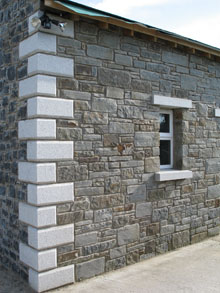Rivington Hall is a Grade II* listed former manor house in RivingtonVillage in the Borough of Chorley, to the northwest of Bolton, on the fringe of the West Pennine Moors., Lancashire, England. The hall is the successor to a 15th-century timber-framed courtyard house that was built near to the present building. No trace remains of the old hall, which was largely demolished by Robert Andrews in 1744 when he rebuilt the hall with a frontage in the Classical Georgian style.
The hall passed to Andrew’s sister and through members of her family until William Lever bought the estate and the hall in 1900.
History
Rivington Hall was mentioned in 1477, the year it was extended by Robert Pilkington who had inherited the Rivington estates the previous year. He employed William Holden to add a hall, cross chambers and two large windows.[1] The hall a “noble and imposing” structure, cost Robert Pilkington nine marks which he paid in two instalments.[2] The 15th-century hall was built of timber and wattle and daub. It was rebuilt in stone at the end of the 17th century [3] and again rebuilt, incorporating some of the older stone building, by Robert Andrews in 1774. Andrews demolished greater part of the old house when and gave it the present red-brick Georgian frontage.[4]
The oldest part of the hall is dated 1694 WB (William Breres) over a rear door on the west side. The date 1700 and WBM (William Breres and Martha) is on the north wing. The oldest parts of the hall are to the rear where the ground floor is built of sandstone rubble with quoins
Any external angle or corner of a structure.; the upper storey is built of coursed squared sandstone, indicating a later date.[3] The oldest parts contain mullion windows.[4]
Architecture
The hall is a Grade II* listed building. Its west front is a symmetrical red brick, two-storey structure in the classical Georgian style with five bays and a pedimented centre. A stone parapet hides the roof which has a chimney in each gable. The central doorway, approached by a flight of four stone steps, is flanked by side lights and also has a pediment. At ground floor level are four tall, 15-pane sash windows and on the floor above five shorter 12-pane sashes with splayed heads.[3] The spout heads bear the date 1774 RA.[a]Robert Andrews The south wing was built in brick in the 19th century.[4]
The stables to the east of the house were dated 1713 WBMI [b]Owners William and Martha Breres and John and 1732 IAA[c]Owners John Andrews and Abigail.[4]
Occupants
The Pilkingtons lived at Rivington from 1327. The first hall, built of timber and plaster, was mentioned in documents in 1477. James Pilkington, Bishop of Durham was born there in 1518. On the death of Richard Pilkington in 1551, the estate passed to George and then to his son, Robert, the last Pilkington owners.[5]
The estate was sold to relatives Robert Lever and Thomas Breres in 1611, and the Breres moved into the hall. In 1729 John Andrews bought the Breres’ share of the estate. His son Robert rebuilt the hall in 1774. After Andrews’ death the property passed to his sister Hannah Maria Andrews, who had married Robert Fletcher of Liverpool. Their daughter Lucy married Woodhouse Crompton in 1834.[4] The Cromptons remained at the hall until 1910, although they had sold the 2100-acre (850 ha) estate to William Lever in 1900.
Notes
| a | Robert Andrews |
|---|---|
| b | Owners William and Martha Breres and John |
| c | Owners John Andrews and Abigail |


